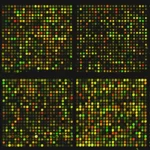
Health Informatics vs. Bioinformatics: Understanding the Differences, Challenges, and Emerging Trends
August 31, 2023Introduction
As we plunge deeper into the era of big data and artificial intelligence, the realm of informatics gains increasing significance. Informatics, the science of processing data for storage and retrieval, has multiple applications, one of which is healthcare. The subfields of health informatics and bioinformatics play pivotal roles in modernizing healthcare and biological research. While both employ informatics techniques to improve their respective domains, they have distinct objectives and challenges. In this comprehensive guide, we will delve into the nuances that set these fields apart, their applications, challenges, and how emerging technologies are poised to revolutionize them.
Understanding Health Informatics
What is Health Informatics?
Health informatics focuses on the organization and analysis of healthcare data to improve individual patient outcomes and optimize healthcare facilities. It is a healthcare-centric subset of biomedical informatics, employing data to resolve practical healthcare issues.
Examples of Health Informatics in Healthcare
1. Electronic Health Records (EHRs): Digital repositories of patient medical history, improving data accessibility for healthcare providers.
2. Telehealth: Facilitating healthcare services remotely, such as video consultations and patient monitoring.
3. Patient Portals: Secure online platforms for patients to review their medical records and interact with healthcare providers.
4. Healthcare Apps: Mobile applications to help manage patient health, set reminders for medications, and offer educational content.
5. Data Reporting Tools: These assist healthcare providers in analyzing and visualizing data for better patient care.
6. Improved Collaboration: Facilitates communication between multiple healthcare providers for well-rounded patient care.
7. Increased Efficiency: Automation, improved data accuracy, and reduced paperwork contribute to better healthcare outcomes.
Bioinformatics
Bioinformatics is an interdisciplinary field that focuses on managing molecular biology data. It employs informatics techniques to organize and understand the information associated with biological molecules.
Differences between Health Informatics and Bioinformatics
While both subfields utilize computer science to manage and analyze data, their focus diverges significantly:
1. Health informatics concentrates on patient care, employing healthcare data to enhance outcomes.
2. Bioinformatics focuses on molecular biology, applying big data techniques to biological research.
Challenges in Implementing Health Informatics
1. Data Management Trends: Keeping up with evolving technology and ensuring interoperability.
2. Cybersecurity Risks: Protecting patient data from unauthorized access and breaches.
3. Telehealth Expansion: Infrastructure upgrades, professional training, and secure communication channels are needed.
4. Application of AI and ML: Ethical considerations and accuracy in deploying artificial intelligence and machine learning.
5. Change Management: Staff resistance and training requirements can impede technology adoption.
Potential Solutions
1. Interoperability Standards: Facilitate seamless communication between different systems.
2. Robust Cybersecurity: Regular audits, staff training, and encryption technologies.
3. Telehealth Infrastructure: Investment in user-friendly, secure telehealth platforms.
4. Ethical AI/ML Frameworks: Transparent, accountable, and fair AI and ML usage.
5. Change Management Strategies: Staff training, workflow redesign, and stakeholder engagement are key.
Emerging Technologies in Health Informatics
1. AI and ML: For diagnostics and treatment plans.
2. Robotics: Automating tasks and assisting surgeries.
3. Internet of Medical Things (IoMT): For remote monitoring and real-time data collection.
4. 3D Bioprinting: Revolutionizing tissue engineering and organ transplantation.
5. Data Analytics and Predictive Modeling: Supporting evidence-based decision-making.
6. Telehealth and Virtual Reality: Remote healthcare and mental health interventions.
7. Blockchain Technology: Enhancing data security and integrity.
Challenges and Solutions in Telehealth Implementation
Challenges
1. Limited Reimbursement: Billing and insurance issues.
2. Access to Technology: Particularly an issue in rural areas.
3. State-Specific Licensure: Regulatory bottlenecks.
4. EMR Integration: Compatibility issues with existing systems.
5. Patient Awareness: Low utilization rates.
Solutions through Emerging Technologies
1. Innovative Billing Systems: Streamlining insurance claims.
2. Affordable, User-Friendly Platforms: Extending technology access.
3. Flexible Licensure Regulations: Facilitating interstate healthcare.
4. Seamless EMR Integration: Improved data sharing.
5. Patient Engagement Strategies: Digital marketing and mobile apps for better awareness and adoption.
Conclusion
Health informatics and bioinformatics, though stemming from the same scientific underpinning, have distinct roles, benefits, and challenges. The integration of emerging technologies like AI, ML, and blockchain in these fields opens a vista of opportunities that could reshape healthcare and biological research for the better. But this evolution isn’t without its hurdles. As we navigate these challenges, it becomes increasingly clear that interdisciplinary collaboration is the linchpin to unlocking the vast potential of informatics in healthcare and biology.

















